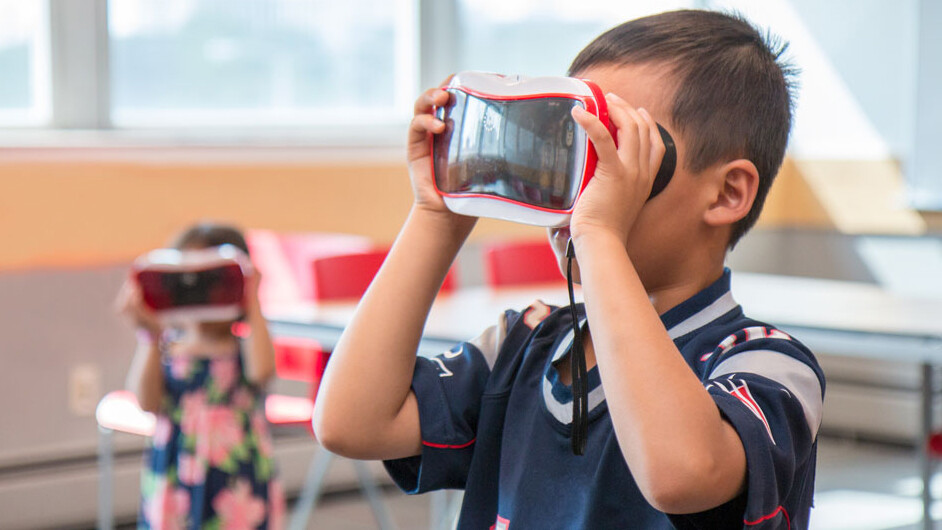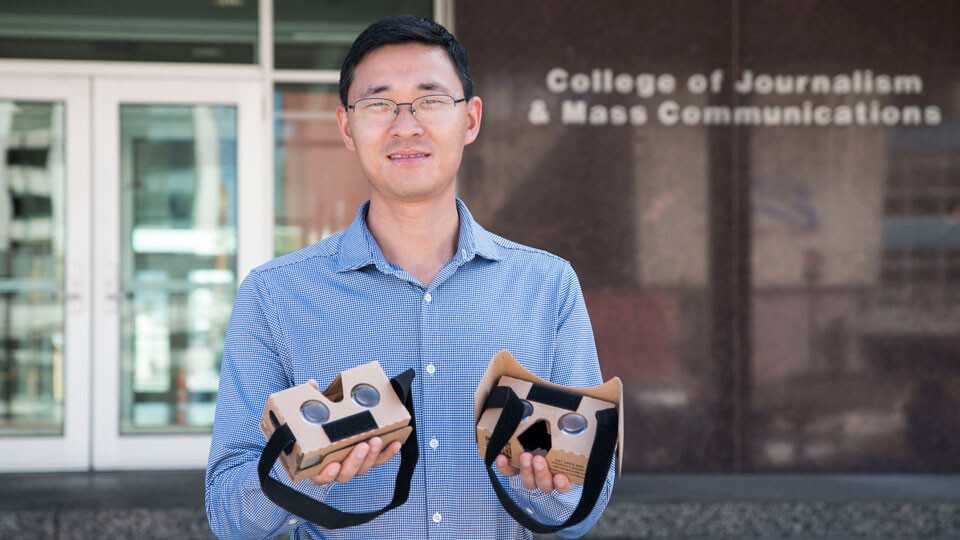
Trees line the horizon under a bright, cloudless sky. It’s a typical outdoor scene — except for the giant pineapple soaring overhead.
Kindergarteners playing the virtual reality game must make a decision: What is the name of the fruit they see?
With $15 Google Cardboard glasses and an interdisciplinary research team, Changmin Yan, associate professor of advertising and public relations at the University of Nebraska-Lincoln, has created an immersive experience to encourage healthy habits for young children in rural communities — particularly those from diverse socioeconomic backgrounds.
The project’s virtual reality curriculum focuses on nutrition and physical activity, drawing from federal guidelines such as MyPlate. Children can choose among three nutrition games: identifying foods, categorizing them according to MyPlate, and identifying how much of each they should eat — referred to as “go, slow, and whoa” foods. They can also choose between two physical activity games.
“The issue we’re trying to tackle, childhood obesity, is quite complicated,” said Yan, who directs the Center for Health Promotion and Translational Research in the College of Journalism and Mass Communications. “That’s why we adopted a team science approach with experts from diverse disciplines. This makes us better positioned to band together and solve problems collectively.”

The research team chose to use virtual reality based on two theories. The first says that kids learn best when they are active and in charge of their learning experiences. The second suggests that if someone is transported into a narrative, they are more likely to be engaged in the storyline.
“Virtual reality is the latest tool that allows us to tap into full immersion with fewer distractions,” Yan said. “The more immersed kids are in our virtual reality game, the more likely they’ll be engaged with the healthy values we’re trying to teach.”
To adapt the game for rural populations, University of Nebraska at Kearney team members Megan Adkins and Matthew Bice engaged Kearney school districts and community organizations to better understand issues of access, affordability and sustainability in rural communities.
These conversations led the team to swap devices: shifting from a more expensive virtual reality headset to the cheaper Google Cardboard glasses.
Additionally, University of Nebraska-Lincoln team members Adam Wagler, Dipti Dev and Lisa Franzen-Castle focused on simplifying the game, allowing users in rural communities to play without depleting their data plans.
“Our team really wants to address health disparities,” Yan said. “We don’t want to make a virtual reality platform as an elite device, or else we are creating another gap. We want to make our game as accessible as possible.”
The study is funded by the University of Nebraska’s Food for Health Collaboration Initiative and is housed in the Nebraska Center for Research on Children, Youth, Families and Schools.
The research team includes Yan; Adkins, associate professor at UNK; Bice, assistant professor at UNK; Rex Cammack, associate professor at the University of Nebraska at Omaha; Franzen-Castle, associate professor at Nebraska; Virginia Chaidez, assistant professor at Nebraska; Tonia Durden, clinical associate professor at Georgia State University; Iheoma Iruka, chief research innovation officer at HighScope Educational Research Foundation; Lisa Knoche, CYFS research associate professor; Wagler, assistant professor at Nebraska; and Dev, assistant professor at Nebraska.







